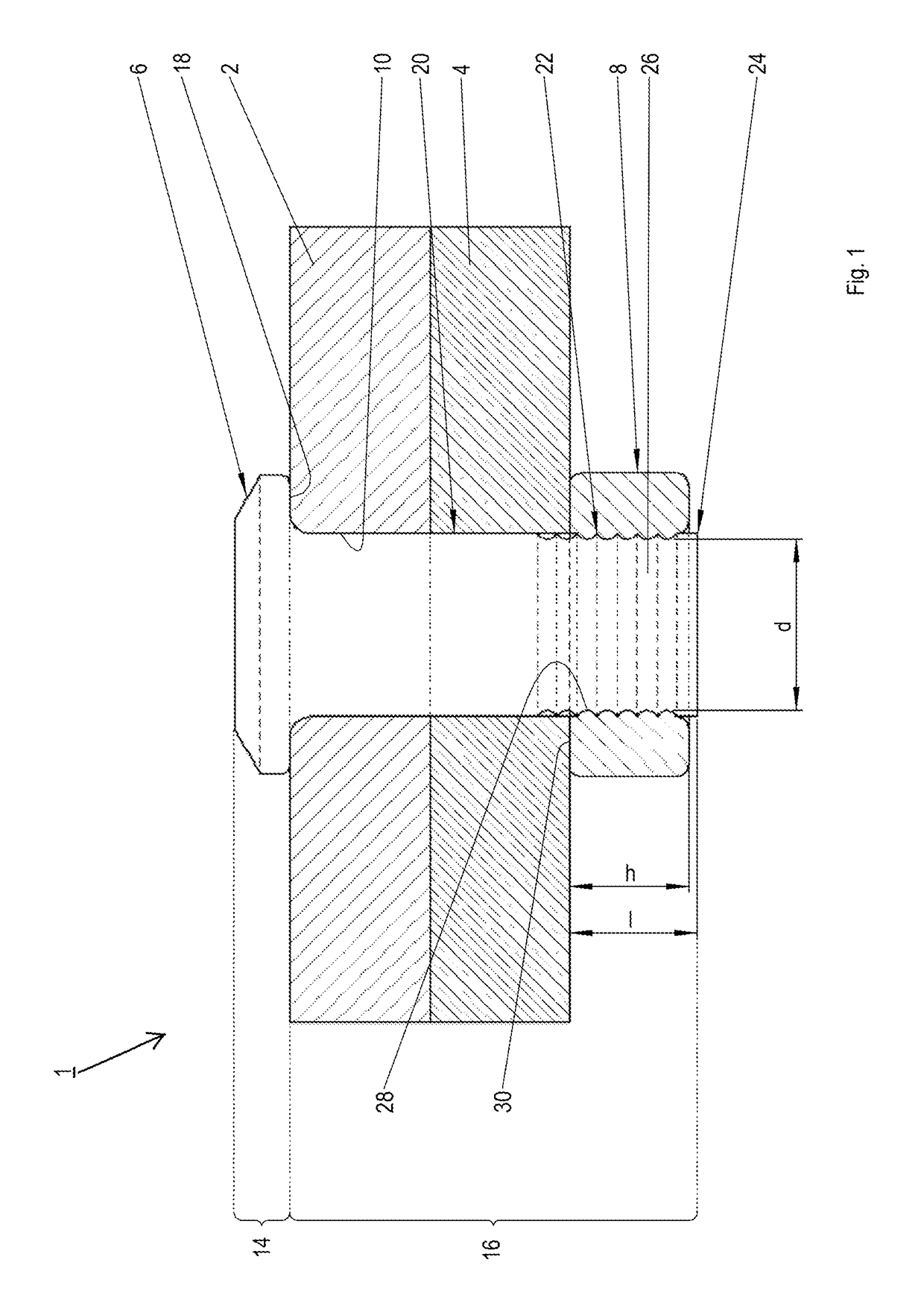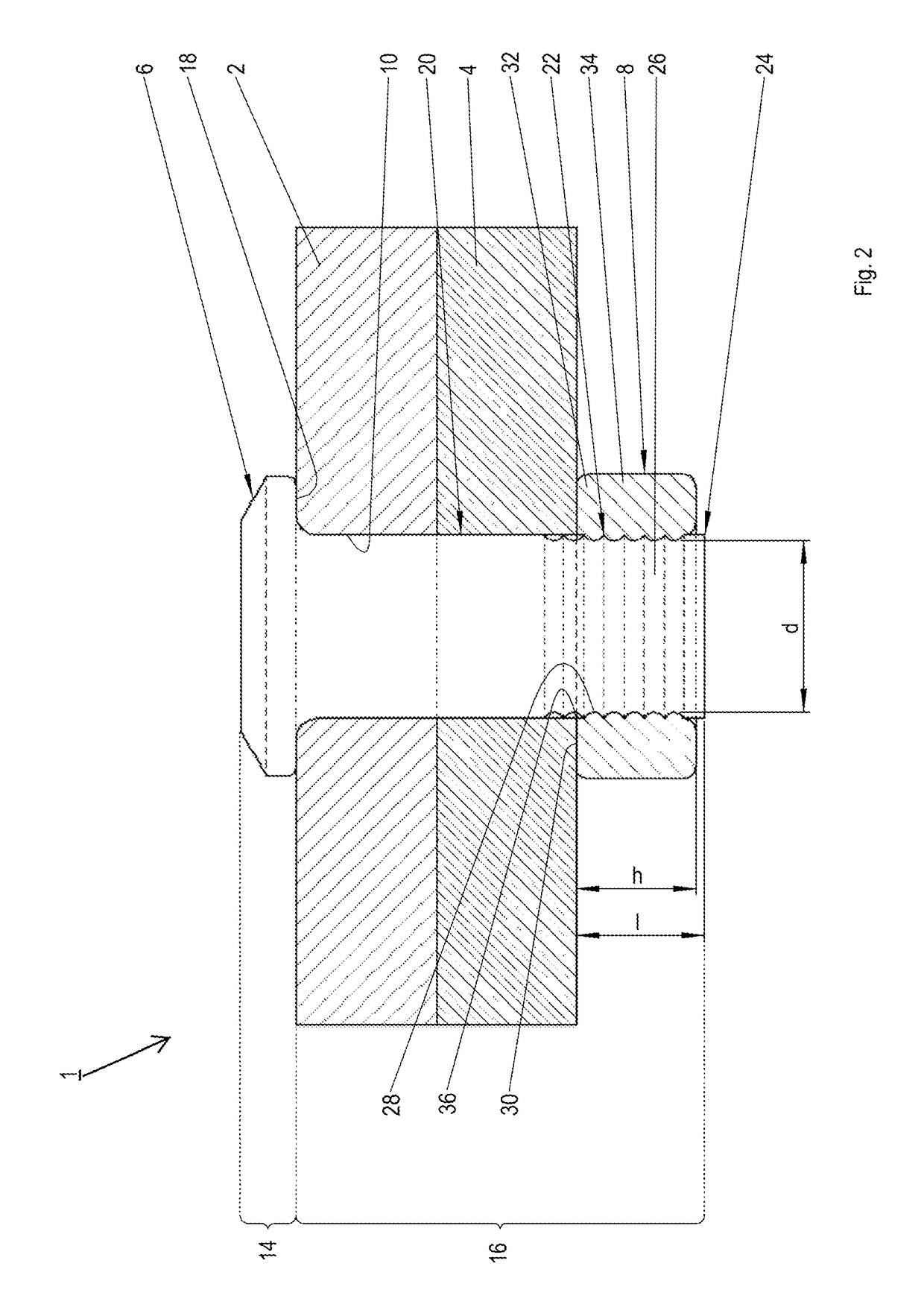Method and a connecting system for the joining of moulded parts
a technology of connecting system and moulded parts, which is applied in the direction of threaded fasteners, screwing, manufacturing tools, etc., can solve the problem of more labor-intensive methods than punch rivet methods, and achieve the effect of high load-bearing capacity
- Summary
- Abstract
- Description
- Claims
- Application Information
AI Technical Summary
Benefits of technology
Problems solved by technology
Method used
Image
Examples
Embodiment Construction
[0022]FIG. 1 shows a joint 1 between two moulded parts 2, 4 with a first example of an embodiment of an inventive connecting system. Needless to say, more than two moulded parts 2, 4 can also be joined with the inventive connecting system. The moulded parts 2, 4 are designed in the form of plates in the region of the joint 1, and in each case preferably are made of a material that can be cold formed such as aluminium, magnesium, steel, or an appropriate metal alloy. However, the moulded parts 2, 4 can also be manufactured from non-metallic materials that are suitable for punching operations such as wood, or a fibre composite material, which for example has a multiplicity of plastic, natural, or metal fibres embedded in a plastic matrix, or a metal matrix. The connecting system has a locking collar pin 6 and a locking collar 8. The locking collar pin 6 is sectionally led out through a punched hole 10 extending through the moulded parts 2, 4, and at its end is locked with the locking ...
PUM
| Property | Measurement | Unit |
|---|---|---|
| strength | aaaaa | aaaaa |
| shear strength | aaaaa | aaaaa |
| force | aaaaa | aaaaa |
Abstract
Description
Claims
Application Information
 Login to View More
Login to View More - R&D
- Intellectual Property
- Life Sciences
- Materials
- Tech Scout
- Unparalleled Data Quality
- Higher Quality Content
- 60% Fewer Hallucinations
Browse by: Latest US Patents, China's latest patents, Technical Efficacy Thesaurus, Application Domain, Technology Topic, Popular Technical Reports.
© 2025 PatSnap. All rights reserved.Legal|Privacy policy|Modern Slavery Act Transparency Statement|Sitemap|About US| Contact US: help@patsnap.com



